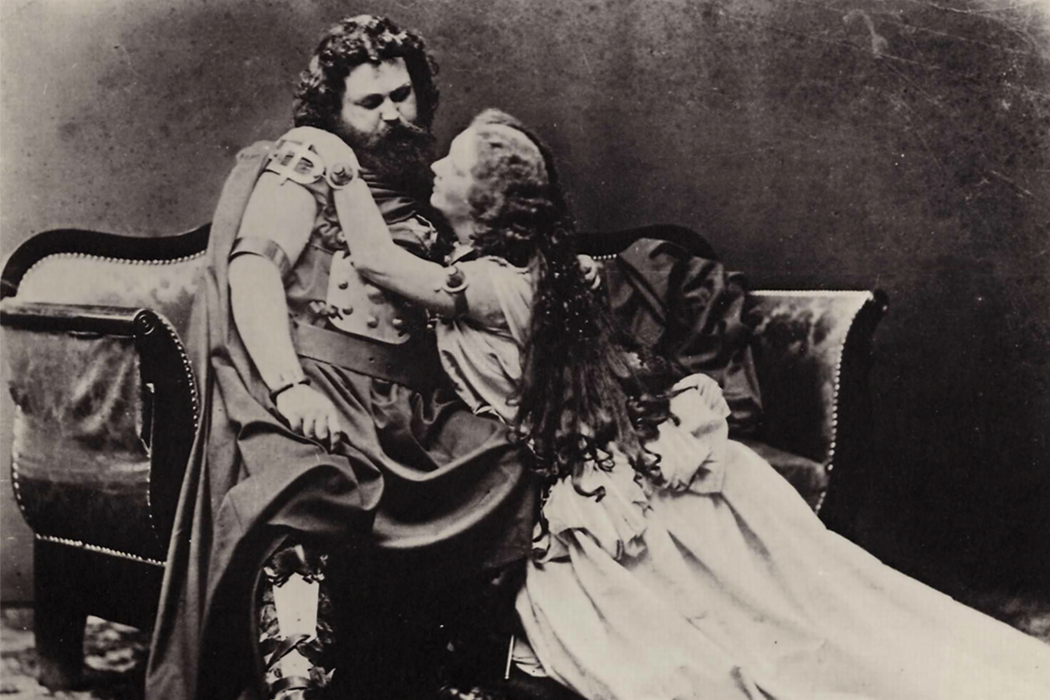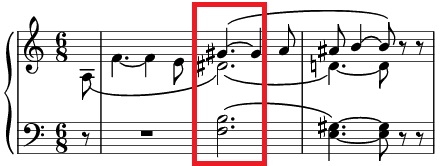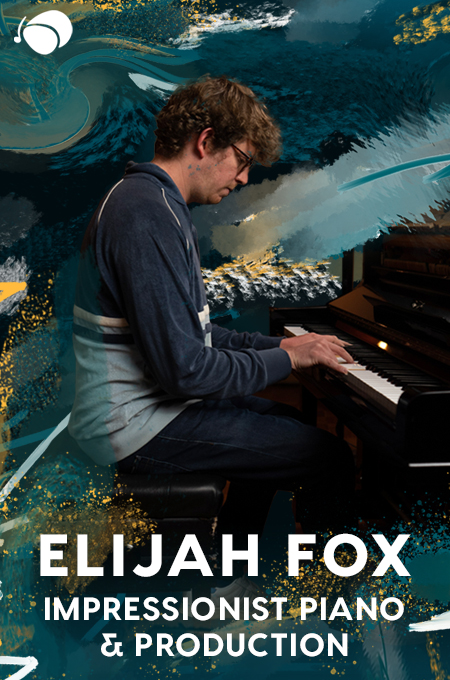
+ Bridge the worlds of theory, improvisation, and jazzy hip-hop, and improve your piano chops with Grammy-winner Kiefer in his course, Kiefer: Keys, Chords, & Beats.
Richard Wagner was well-known in his time for composing operas that pushed the limits of harmony, vocal performance, performance spaces, and instruments themselves. Wagner famously built his own theatre in Bayreuth, Germany, to perform his epic works in, and had his own instruments designed and built for him, such as the “Wagner tuba.”
But Wagner is perhaps best known for composing a collection of epic opera works known as The Ring Cycle, and for singular standout pieces like Die Walküre and Tristan and Isolde.
With Tristan and Isolde, Wagner wanted to tell the medieval folk-inspired story of two lovers drawn to each other because of a magic potion, but whose lives prohibited them from being together everlastingly. Wagner planted a harmonic device — now known as the “Tristan Chord” — deep inside this epic narrative, which would change the course of Western music for years to come.
The Narrative
Let’s back up a bit, and dive a deeper into the plot of the story.
The narrative follows Tristan, who kills Isolde’s boyfriend in a battle. But, not knowing he has killed her boyfriend, he then seeks her out to heal his wounds. The two meet and are attracted to each other, but Tristan can’t get past the fact that he killed her boyfriend. So he suggests Isolde marry his uncle. Isolde agrees, but in a crisis of emotion, she can’t decide whether she loved Tristan or wanted to take revenge. In an attempt to free herself, she decides to kill Tristan. She gives him a deadly potion to drink, but also drinks some herself.
Unbeknownst to her, however, her maid has switched the potions. They instead end up drinking a love potion and fall madly in love. They then have to hide their insatiable love, and the two finally do end up dying together.
For Wagner, this piece represents an unrelenting desire for a love or feeling of fulfillment that only exists beyond life itself. Throughout this fairy tale, he weaves a tapestry of harmonies and cadences that never truly resolve, but offer temporary respite from the immense, pervasive feeling of longing. When speaking about the themes of this piece Wagner himself expressed:
“Henceforth no end to the yearning, longing, rapture, and misery of love: world, power, fame, honor, chivalry, loyalty and friendship, scattered like an insubstantial dream; one thing alone left living: longing, longing unquenchable, desire forever renewing itself, craving and languishing; one sole redemption: death, surcease of being, the sleep that knows no waking!”
Several attributes of Tristan and Isolde contribute to its lasting legacy, not the least of which is its use of leitmotif as a new approach to harmonic organization that some scholars argue stretched the limits of Western harmony and pushed it towards atonality.
Now what is a leitmotif?
A leitmotif is a melodic theme or cue that represents and follows a particular character, adding depth to their identity as their story progresses. Today, we most commonly hear these in film music to represent certain characters or places. In Tristan and Isolde, Tristan’s own musical theme manifests as a strange chord, known as the Tristan Chord.
Identifying the Tristan Chord and Its Context
We first hear this chord in measure 2 of Act 1, spelled as: F B D# G#. This chord can be labeled in a number of different ways according to the function it serves. The chord is enharmonically similar to an F half-diminished chord.
To build this chord, all you need is a tritone (F to B), an augmented 6th (F to D#), and an augmented 9th (F to G#) from the root note of the chord.

This one chord itself represents a significant departure from tertian harmony, or harmony primarily built using the intervals of major and minor thirds, and it adds new colors and shades to the composer’s palette.
But what makes this chord so special?
Well it’s not so much the chord’s construction itself, but how it’s used. Every time this chord appears throughout the four-hour long opera, it’s meant to signify something about Tristan’s character. You can start to see how important those color shades become as the protagonist’s identity develops and deepens.
But it has also been debated how to even approach its functionality within the music itself — whether the chord exists within the realm of functional or nonfunctional harmony.
Most music theorists agree that the chord serves some sort of predominant function (meaning it precedes the dominant chord, usually as a II– or IV), but in the context of the Prelude to Tristan and Isolde, the chord can be analyzed in a few different ways. When we first hear this chord, we assume the piece is established in the key of A minor. Therefore, the B-natural in the Tristan Chord would be considered the root, while the chord could functionally be considered similar to a II7, and similar in function to a secondary dominant.
But the chord has also been related to a French Augmented 6th, an inversion of a dominant chord that functions as a predominant chord or a chromatic passing chord.
Let’s pause here for a second and listen to composer/conductor Leonard Bernstein give us a brief epic history lesson on chromaticism and diatonicism. (And if this piques your interest, you should definitely take a free preview of Soundfly’s Unlocking the Emotional Power of Chords and The Creative Power of Advanced Harmony courses when you get a chance.)
Back to the Tristan Chord. The above analysis (of only the first instance of the chord being used) assumes Wagner was attempting to use the chord functionally, but what about the plausible notion that this wasn’t his intension at all?
“He didn’t use this chord to connect it to a tonal gravitational center; he used it because its dissonance communicated something about his protagonist that words alone could not convey.”
Although throughout the piece the chord does eventually resolve to a dominant chord, it also sometimes resolves to other Tristan Chords in different keys, and is also found being used as a hinge to modulate to other distant keys. As I mentioned earlier, the chord can be respelled as a half-diminished chord, which is considered dissonant and traditionally used as a passing chord. In Tristan and Isolde, Wagner decided to give this mysterious, dissonant sound the spotlight.
Wagner composed in the mid-19th century, at the tail-end of the Romantic period. Some of his contemporaries, like Chopin, Bach, and Mozart, had actually used the Tristan Chord before, but it was always used in the background, in an easily understandable harmonic context, and never in the foreground. The very idea of such an unfounded, dissonant sound taking the spotlight itself set Wagner apart.
He didn’t use this chord to connect it to a tonal gravitational center; he used it because its dissonance communicated something about his protagonist that words alone could not convey. This led to a radical shift in the way composers started to approach harmony and tonality. Tristan and Isolde pushed composers to focus on the sounds and emotions certain chords evoked. His approach was later adopted by impressionist composers such as Debussy and Ravel who would themselves inspire the jazz composers that followed them.
Applying This Chord to Our Own Music
If you’d like to start playing around with this chord to color your compositions, my first piece of advice would be try experimenting with building this chord on different root notes and using the intervals of: the tritone, the augmented 6th, the augmented 9th.
Remember that you don’t need to use it functionally, but it helps to try to insert the chord into different progressions to give it space to create harmonic movement. Try using it as a predominant chord, where you’d perhaps otherwise use a II– or IV chord. How does the feeling change when the context around it changes?
Feelings of desire, unrest, and longing are associated with Wagner’s character, Tristan. Try to find ways to insert these dramatic emotions into your music as well.
The Tristan Chord provides just one example of a flexible tonal sound, but there are endless sounds waiting to be discovered, waiting for their stories. Try combining random sets of intervals to make your own new and unique chords. You never know… you may come up with something that changes the world.
Don’t stop here!
Keep learning about theory and harmony, composing and arranging, songwriting, and more, with Soundfly’s in-depth online courses. Subscribe for access to all, including The Creative Power of Advanced Harmony, Orchestration for Strings, and our exciting new course with Grammy-winning pianist and producer, Kiefer: Keys, Chords, & Beats.




